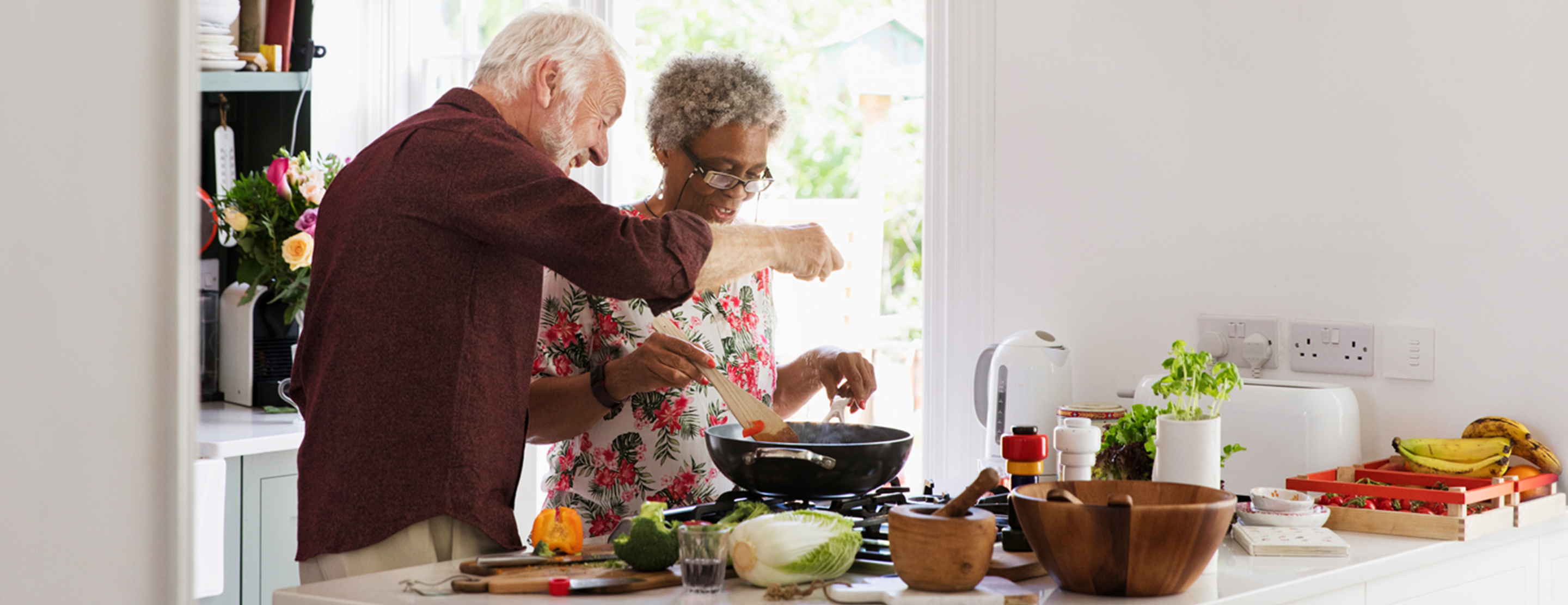
ILD Nutrition Manual: Plate Method for Healthy Meal Planning
Step 1: Fill half your 9-inch plate with non-starchy vegetables
- Non-starchy vegetables are low in calories and carbohydrates and high in fiber. This means they can help you feel more full and satisfied with your meal, but won't lead to weight gain and high blood sugar.
- Aim for 1 to 2 cups of any vegetable, other than the starchy vegetables listed in Step 3.
- Vegetables can be raw or cooked.
Step 2: Limit protein to a quarter of your plate
- Choose lean meat, poultry or fish. Your portion should not be bigger than the palm of your hand. Try 1 to 2 whole eggs, or just use the egg whites for lower cholesterol.
- Choose tofu, nuts or seeds. Aim for about 2 tablespoons of nuts and seeds or 1/2 cup of tofu.
Step 3: Limit starch to a quarter of your plate
- Starch is a source of carbohydrate, which turns into an important fuel, called glucose. Limiting the portion size of starch helps control body weight and blood sugar.
- Choose a bun, tortilla, bread, bagel, rice, grains, cereal, pasta or a starchy vegetable.
- If you choose bread, limit it to 2 slices or 1/2 bagel.
- If you choose a hamburger or hotdog bun, limit it to 1 bun.
- If you choose a tortilla, limit it to 2 small tortillas or 1 large tortilla.
- If you choose rice, grains, pasta, cereal or a starchy vegetable, limit the portion to no more than 1 cup — this is about the size of a woman's fist. Starchy vegetables include beans, potatoes, corn, yams, peas and winter squash.
- Choose most of your starches from whole grains, such as whole wheat bread or tortillas, brown rice, whole grain and bran cereals, whole wheat pasta or beans.
Note: For a high-protein, low-carbohydrate diet, replace the starchy vegetable with more non-starchy vegetables, make the protein portion larger (4 to 6 ounces of lean meat or other protein rather than 2 to 4 ounces), and take a multivitamin and mineral supplement
Step 4: If desired, add one portion of fruit or milk
- Fruit, milk and yogurt are also sources of carbohydrate. To best control body weight and blood sugar, limit yourself to either fruit or milk at your meal. You may choose to save the fruit or milk for a snack.
- Because high-carbohydrate drinks can quickly raise blood sugar, avoid drinking fruit juice.
- Examples of fruit portions are:
- 1 small apple, orange, peach, pear, banana or nectarine, or half of a larger-size fruit
- 3/4 cup fresh pineapple chunks, blueberries or blackberries
- 17 grapes
- 1-1/4 cups strawberries or watermelon
- 1 cup cantaloupe, honeydew or papaya
- Choose low-fat or non-fat dairy products for heart health and weight control.
- Examples of milk and yogurt portion sizes are:
- 1 cup (8 ounces) of non-fat or 1 percent milk, or soy milk
- 2/3 to 1 cup plain non-fat or aspartame-sweetened fruit yogurt
Step 5: Limit added fats
- Avoid adding fats like butter, margarine, shortening, mayonnaise, gravies, cream sauces, salad dressing and sour cream to your food. Instead, season foods with herbs and spices.
- Cook using low-fat methods such as baking, steaming, broiling or grilling. Avoid frying foods.
For more on the Plate Diet, go to http://www.diabetes.org/food-and-fitness/food/planning-meals/create-your-plate/.
Next:
ILD Nutrition Manual Index:
- ILD Nutrition Manual: General Guidelines for Eating Healthy
- ILD Nutrition Manual: Body Mass Index
- ILD Nutrition Manual: Increasing Protein in Your Diet
- ILD Nutrition Manual: Tips for Gaining Weight
- ILD Nutrition Manual: High-Calorie, High-Protein Sample Menu
- ILD Nutrition Manual: High-Calorie Shakes and Smoothies
- ILD Nutrition Manual: Tips for Losing Weight
- ILD Nutrition Manual: Plate Method for Healthy Meal Planning
- ILD Nutrition Manual: Prednisone and Weight Gain
UCSF Health medical specialists have reviewed this information. It is for educational purposes only and is not intended to replace the advice of your doctor or other health care provider. We encourage you to discuss any questions or concerns you may have with your provider.














